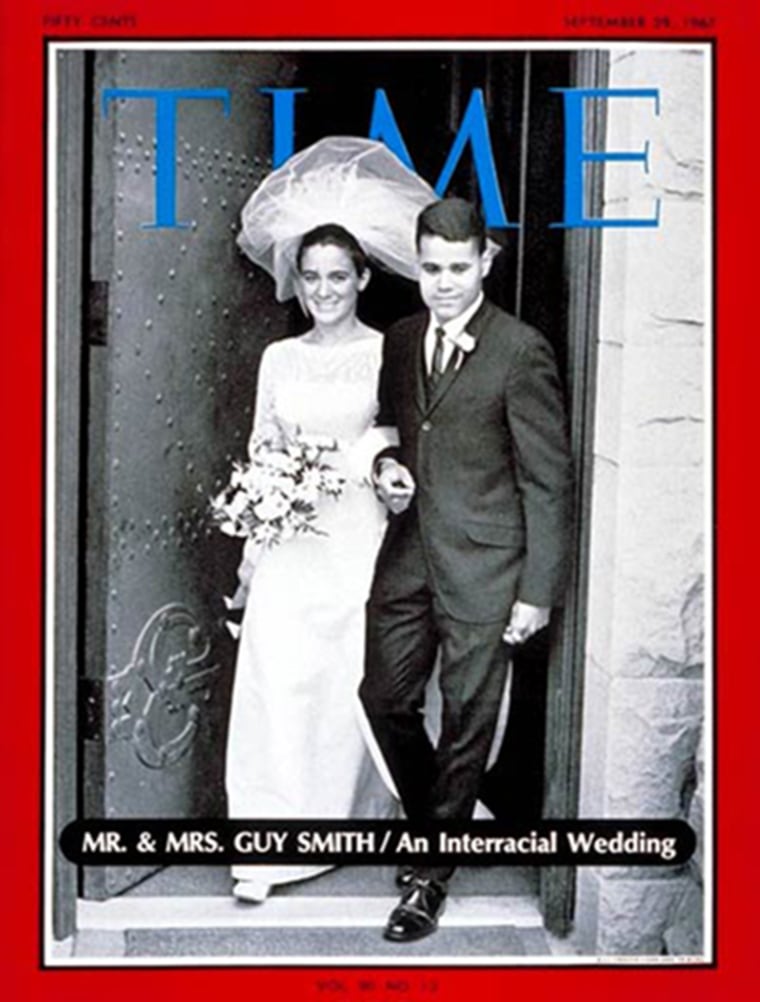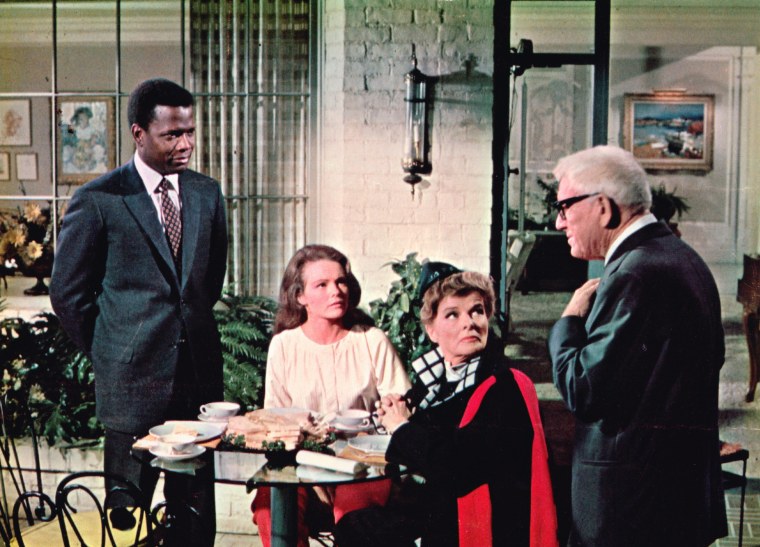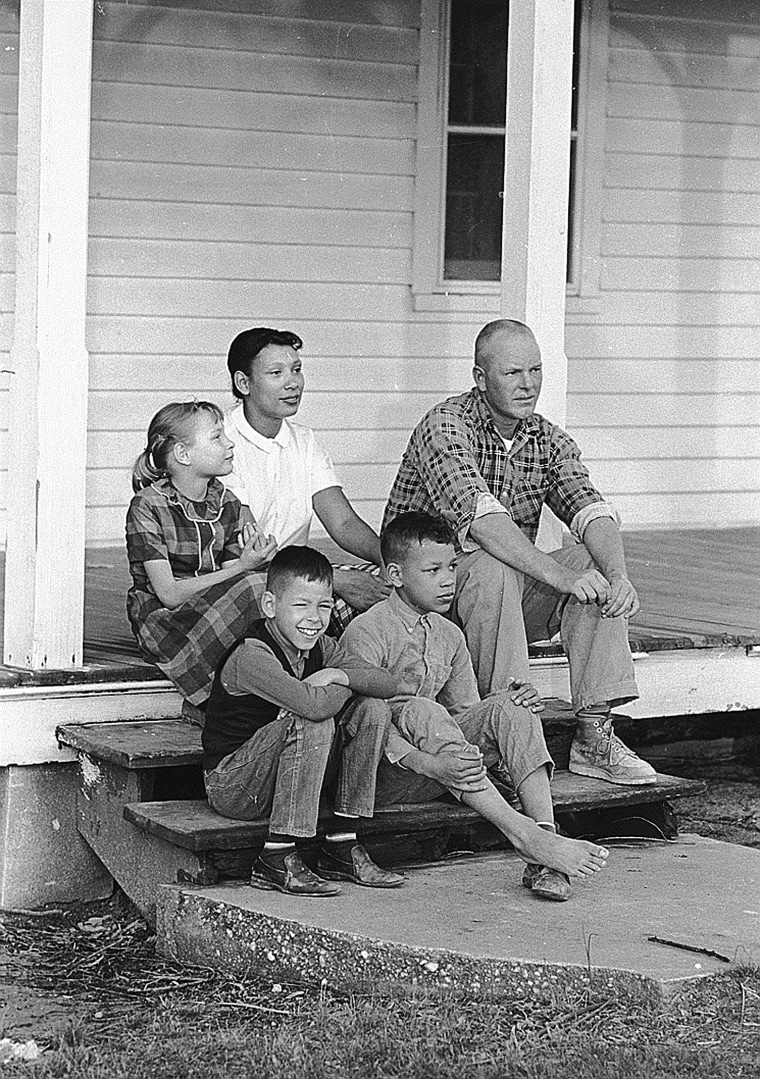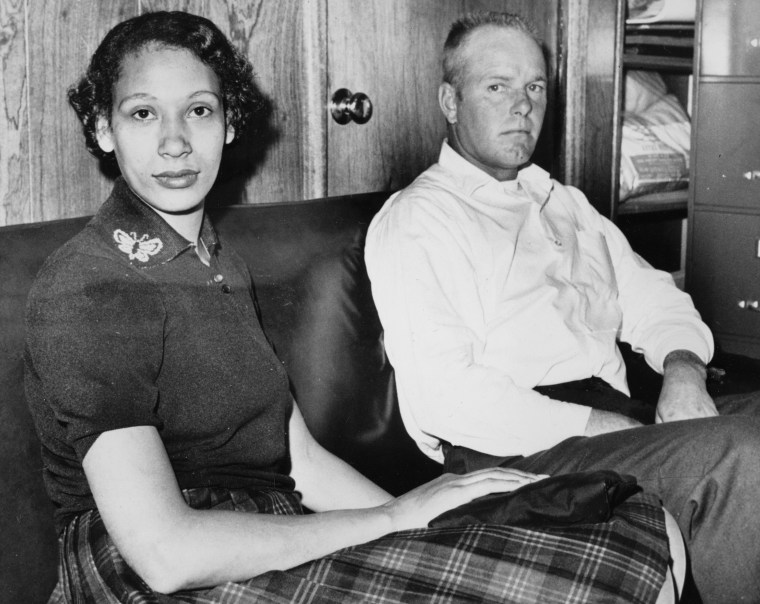Like many other milestones in civil rights legislation, the acceptance of interracial marriage has hardly been a smooth, celebrated or overnight process.
Seemingly unfathomable, just 50 years ago it was illegal for blacks and whites to marry in 16 states because of "anti-miscegenation" laws. But the Supreme Court redirected history when it struck down laws prohibiting interracial marriage, on June 12, 1967, in Loving v. Virginia.
Mildred and Richard Loving, however, were not the only courageous interracial couple to make headlines that year.
Just a few months after the Loving decision, Time magazine featured on its cover, the California wedding of Peggy Rusk, the daughter of then Secretary of State Dean Rusk, to Guy Smith, an African-American man.

Any high-profile wedding comes with a fair amount of attention, but the stares the Smiths endured after their widely publicized nuptials were indicative of a larger issue beyond harmless curiosity.
“One of my biggest goals throughout our marriage was to do what I could to help prevent lose-lose situations for Guy,” Smith said in an email to NBCBLK. She made the conscious decision to not look people in the eye when they stared at her or her husband to avoid, “confrontations where his choice was to be humiliated and back away or stand his ground and risk a fight.”
Fortunately, views on interracial marriage have evolved since Smith’s marriage in 1967 when, according to the Pew Research Center, only 3 percent of newlyweds were interracial. As of 2015, 17 percent of newly married couples in the U.S. have a spouse of another race.
But it’s the details behind the data that crystallize where America really stands on the issue.
“The big reason behind the rise of 17 percent has to do with an increase in Hispanic and Asian interracial marriage,” said Kimberly DaCosta, a sociologist and professor at New York University. “Blacks and whites marry least among those who intermarry. And we have to ask ourselves why that is and what does it mean.”
It’s certainly a fact that since slavery, negative views of blacks have been passed down through generations and continue to permeate segments of society.
Related: One in Six Newly Married Americans Has Spouse of Different Race or Ethnicity
“There are still stereotypical ideas in existence,” said Jelani Cobb, a professor at Columbia Journalism School who writes about race, history and politics. “Attitudes have become more liberal about interracial marriage, but not universally and not to equal degrees. There’s a scale of acceptability—Asians marrying whites, Hispanics marrying whites, lastly, blacks marrying whites.”
The deep-seated beliefs that people have on race and pop culture, particularly television programming, are other contemporary indicators of how society feels about interracial couples.
After Loving, there have been efforts to mainstream black-white romantic relationships. Anyone of a certain age remembers the romantic comedy “Guess Who’s Coming to Dinner?” where Sidney Poitier plays the black fiancé meeting his future white in-laws.

But what’s widely recognized as the first interracial kiss on television, airing in 1968 on “Star Trek”, between Captain Kirk and Uhura, played by William Shatner and Nichelle Nichols, really tested society’s tolerance levels.
“We’ve come a long way since the time of the Kirk kiss,” said David Bushman, a television curator at The Paley Center For Media. “They originally thought Spock should kiss her since he wasn’t 100 percent human. Networks, then, were afraid of reactions from stations in the south and losing sponsors.”
“There will always be a percentage of people who feel the necessity to hate difference no matter where they are from. Small mindedness and fear seem to go together”— Peggy Smith
Television, nevertheless, through the years has helped normalize interracial couples, according to Bushman. Shows like “The Jeffersons,” and modern ones like “Scandal” and “Grey’s Anatomy” where romantic relationships between people of different races are ubiquitous, reflect America’s changing demographics and tolerance levels.
But resistance lingers, as evidenced by the 2016 presidential election cycle where hardly any minority group escaped unscathed from discriminatory attacks. Considering how hyper-polarized opinions are now, it’s reasonable to wonder if the increase in overt racism will have an impact on interracial marriage.
“We know there are those people who still believe that intermarriage is wrong,” said DaCosta. “A lot of these deeply ingrained beliefs about blacks are that they’re too different. And they’re different in a negative way.”
Unpopular views around interracial marriage are felt among blacks too, not just whites, but for different reasons.
“African Americans can be skeptical of interracial marriage, especially of blacks who have status, wealth and success or some combination of the three, because the message is those blacks think whites are better,” said Cobb.
Smith — who along with her late husband was a professional horseman and lived a quiet life in Virginia together with their daughter — said she wasn’t plagued by racist encounters during her marriage, but there were a few incidents while dating.

“There will always be a percentage of people who feel the necessity to hate difference no matter where they are from," she said. “Small mindedness and fear seem to go together.”
But small minded views are powerful and made national headlines just a few years ago in 2013 when Cheerios debuted a commercial that featured an African-American man, his white wife and their bi-racial daughter. YouTube disabled the comments section, because the remarks were so prejudiced.
Related: Old Navy Interracial Ad Resurrects Heated Debate
And yet those nasty anonymous posts arguably pale in comparison to the real life racist acts amplified last year.
In 2016, hate crimes were up by 20 percent, according to the Center for the Study of Hate and Extremism at California State University, San Bernardino.
“We absolutely can regress,” said DaCosta. “When you have political figures in positions of power with access to the mic, what they say has an effect. And that boundary of black verses white is still pretty firm.”
Smith is hopeful that tolerance of interracial marriages will continue, despite heightened rhetoric. “Unfortunately one generation can influence the next but I think the general trend will be towards more acceptance,” she said. “Prejudice is a fascinating social phenomenon. I think it will be with us always.”
